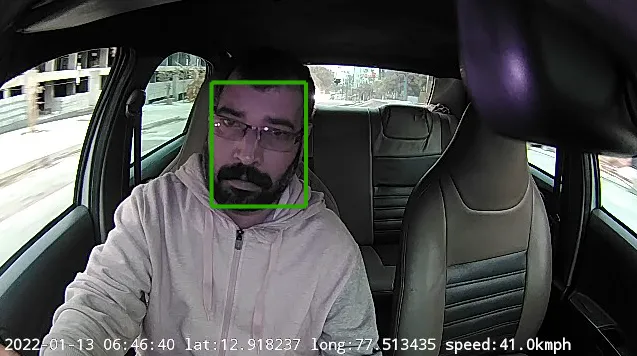RideView Goes Global
The growth of RideView as a platform has closely mirrored the increasing maturity of video telematics in the North American market over the previous 5 years – from Wi-Fi dash cams that worked in conjunction with ELD tablets and smartphones that became prevalent with the introduction of the ELD mandate in late 2017, to standalone connected dual dash cams that work for fleets of any type today.

The growth of RideView as a platform has closely mirrored the increasing maturity of video telematics in the North American market over the previous 5 years – from Wi-Fi dash cams that worked in conjunction with ELD tablets and smartphones that became prevalent with the introduction of the ELD mandate in late 2017, to standalone connected dual dash cams that work for fleets of any type today. Working with leading TSPs and end-users in this key market, who have shared with us their pain points and needs, has been the primary driver for the enhancements and innovations we have focused on.
While video telematics is now firmly established in North America as a core fleet offering, something fundamental has changed in other key markets as well over the last few years. While we can cite various reports that prove that point, this was brought home to us in a much more direct way – the odd in-bound requests from TSPs in other markets have over the past year become a deluge. And what started as an exercise in dipping our toes in the water to find what kind of product-market fit we had, has now become a proven and legitimate channel that is growing faster (COVID notwithstanding) than we could have ever imagined. Over the past year, we have gone live in Australia, LATAM, Africa, the Middle East, and SE Asia, with launches scheduled in the EU and UK in 2022.
This opportunity to bring the latest in advanced video telematics and improve fleet safety globally is both a privilege and a responsibility – the responsibility to understand and solve for the specific needs of TSPs and fleets in the markets we operate in, and to ensure compliance with data protection and other relevant regulations wherever viable. While this is an ongoing effort, let us take a look at the various dimensions along which the RideView platform is enhancing today to meet the needs of our global customer base.
ISO 27001 and ISO 22301 certifications:
The RideView platform handles video and other meta-data related to commercial fleet drivers globally. To go hand in hand with our best-in-class solutions, we have also taken steps to ensure that our internal policies and processes around information security and business continuity around disruptive incidents are also best-in-class. Towards that end, we are happy to report that we are now ISO 27001 and ISO 22301 certified, which is now reflected in how we conduct our business across all levels of our organizational hierarchy.
A brief primer on the organizational changes required by both certifications:
- ISO 27001 is the internationally recognized best practice framework for information security management systems (ISMS) and one of the most popular ISMS standards worldwide. The standard structures how businesses should manage risk associated with information security threats, including policies, procedures, and staff training. It includes recommendations for a risk assessment process, organizational structure, information classification, access control mechanisms, physical and technical safeguards, information security policies, procedures, monitoring, and reporting guidelines.
- ISO 22301 is an international standard published by the International Organization for Standardization (ISO), and it describes how to manage business continuity in an organization. ISO 22301 specifies the requirements for a management system to protect against, reduce the likelihood of, and ensure your business recovers from disruptive incidents. The ISO 22301 standard is designed to ensure that a robust business continuity management system has been established and that internal staff members are fully aware of their role within the system should an incident occur.
Data localization and GDPR compliance:
Starting with the GDPR (General Data Protection Regulation) in the EU, countries around the world are adopting regulations to ensure citizens have more control over the use of their personal data. From the RideView platform standpoint, even though there are no standardized global mandates, we have decided to stay ahead of the curve and adopt GDPR-level processes in the major geographies we operate in, with an eye on extending it across all viable geographies going ahead.
One of the major components of that effort is data localization or the hosting of end-user data within relevant regional jurisdictions. For our customers in the US, Canada, Australia, and the EU, all end-user data is now hosted and stored locally, with the option of having local compute infrastructure as well. The RideView backend has been rearchitected to ensure the seamless onboarding of new customers in these geographies with the appropriate storage and compute configurations and can be easily extended to include any geographies where underlying local data center support is available from our cloud service providers.
GDPR however is more than data localization, and to make sure we have the policies in place and the required infrastructure and processes to follow the rules laid down by GDPR, we have also conducted an audit by certified auditors and have implemented their recommendations. These cover things like transparency about what data we are capturing and for what purpose, handling of data takedown requests, time limitations around data storage, etc. Taken together, they ensure that GDPR-level protections are now available to end-users in all our major markets today.
Platform enhancements:
The platform enhancements that are needed to support customers in different geographies fall into two broad categories
AI:
At a systems level, the RideView platform handles most major geographies with respect to the driving side (RHS/LHS) and metric system (mi/km) automatically, through reverse geo-decoding of location data. Consequently, DMS engines focus on the occupant who is the driver, whether it be in North America or Australia and the UK, as one example:


ADAS engines have to handle more complexity though, due to the variations both in the type of traffic signs and in the different configurations and local laws around them. The RideView platform currently recognizes speed limit signs in the following formats – US, Canada, and Vienna convention (prevalent in UK, AU, SA, Brazil, Israel, India, and many other countries), and STOP signs in the US format and in French for the province of Quebec in Canada. Sign recognition is only one part of sign compliance though, with local variations in different countries that need to be accounted for – a time-consuming task requiring analysis of a significant corpus of real-life data.
That task is an ongoing one, but the RideView platform currently officially supports speed limit recognition in the following geographies – US, Canada, UK, AU, SA, India, Mexico, and Singapore. STOP sign recognition is supported in the US, Canada (including Quebec), UK, AU, SA, India, and Singapore. As our deployments expand into other countries, we aim to keep adding to this list as and when our ADAS engines can robustly support new sign formats and local variations.
Language support:
As we have mentioned before, our fully featured fleet portals are an important option for TSPs who need a fast integration and launch of the RideView platform – through rebranding and single sign-on and iFrame integrations. While that has been a matter of weeks for our customers in the english-speaking world, it left customers in other countries without native language support and reliant on browser-based translation engines. That changed recently with the addition of native language support for Portuguese, Spanish, and French. For TSPs in countries where these languages are prevalent, it is now a matter of weeks to launch an advanced video telematics solution.

With this framework in place, we plan to add native support for more languages as our customer base grows in new geographies.
The penetration of video telematics in the US, one of the most mature markets for fleet telematics, is only around the 5% mark today. That number is definitely lower in the rest of the world, but we are on the cusp of a paradigm shift as awareness of the benefits of video-based safety increases globally over the next few years. Being in markets at the early stages of the adoption of a major new technology is exciting and humbling at the same time. The responsibility to ensure that customers globally can rely on our platform to be stable and secure, and deliver safety to hundreds of thousands of fleets and drivers, does not sit lightly with us. We look forward to long and fruitful partnerships with all our partners globally as we drive a revolution in fleet safety together.
To learn more about the RideView platform features available in your geography, reach out to us at info@lightmetrics.co.

